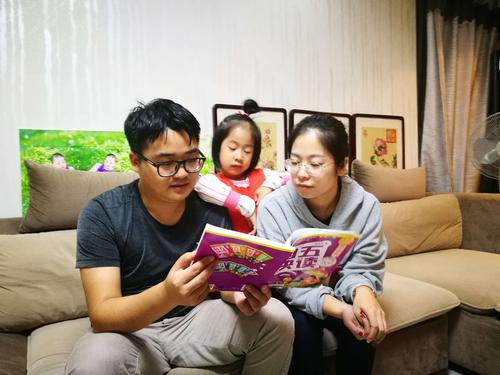done是什么意思e在线翻译读音例句-英语六级考试成绩
2023年4月3日发(作者:端午节的由来和习俗)
MakingaMiracle
Author(s):,Jr.
Source:Econometrica,Vol.61,No.2(Mar.,1993),pp.251-272
Publishedby:TheEconometricSociety
StableURL:/stable/2951551
Accessed:07/12/201013:08
YouruseoftheJSTORarchiveindicatesyouracceptanceofJSTOR\'sTermsandConditionsofUse,availableat
/page/info/about/policies/\'sTermsandConditionsofUseprovides,inpart,thatunless
youhaveobtainedpriorpermission,youmaynotdownloadanentireissueofajournalormultiplecopiesofarticles,andyou
mayusecontentintheJSTORarchiveonlyforyourpersonal,non-commercialuse.
hercontactinformationmaybeobtainedat
/action/showPublisher?publisherCode=econosoc.
EachcopyofanypartofaJSTORtransmissionmustcontainthesamecopyrightnoticethatappearsonthescreenorprinted
pageofsuchtransmission.
JSTORisanot-for-profitservicethathelpsscholars,researchers,andstudentsdiscover,use,andbuilduponawiderangeof
nformationtechnologyandtoolstoincreaseproductivityandfacilitatenewforms
einformationaboutJSTOR,pleasecontactsupport@.
TheEconometricSocietyiscollaboratingwithJSTORtodigitize,preserveandextendaccesstoEconometrica.
Econometrica,Vol.61,No.2(March,
1993),251-272
MAKINGAMIRACLE1
,JR.
Thislecturesurveysrecentmodels
ofgrowthandtradeinsearchofdescriptions
of
technologiesthatareconsistent
withepisodesofveryrapid
isis
placedontheon-the-jobaccumulation
ofhumancapital:learningby
le
connectionsbetweenlearning
ratesandinternationaltradeare
discussed.
KEYWORDS:Growth,productivity,on-the-jobtraining,
learning.
UCTION
IN1960,THE
PHILIPPINES
ANDSOUTH
KOREAhadaboutthesamestandard
of
living,asmeasuredbytheir
percapitaGDPsofabout
$
countriesweresimilar
were28millionpeople
in
thePhilippinesand25million
inKorea,withslightly
overhalfofbothpopula-
sevenpercentof
Filippino\'slivedinManila,28
percent
countries,
allboysofprimary
school
agewereinschool,
andalmostallgirls,butonlyabouta
quarterofsecondary
schoolagechildrenwereinschool.
Only5percent
ofKoreansinthei沐猴而冠意思 rearly
twentieswereincollege,as
comparedto13percent
sixpercentofPhilippineGDP
wasgeneratedinagriculture,and28percent
in
a,thecomparable
numberswere37and20percent.
Ninetysix
percent
ofPhilippinemerchandiseexports
consistedofprimarycommodities
and4percentofmanufactured
a,primary
commoditiesmadeup
86percentofexports,andmanufactured
goods14(ofwhich8were
textiles).
From1960to1988,GDPper
capitainthePhilippinesgrew
atabout1.8
percentperyear,
abouttheaverageforpercapita
incomesintheworldas
a
a,overthe
sameperiod,percapitaincomegrew
at6.2percent
peryear,
arateconsistentwiththedoubling
oflivingstandardsevery11years.
Koreanincomesarenowsimilar
toMexican,Portuguese,
orYugoslavian,about
threetimesincomesinthe
Philippines,andabout
onethirdofincomesinthe
UnitedStates.2
Idonotthinkitisinanyway
anexaggerationtoreferto
thiscontinuing
transformationofKoreansocietyasa
miracle,ortoapply
thistermtothevery
similartransformations
thatareoccurringinTaiwan,HongKong,andSinga-
beforehavethelivesofsomanypeople
(63
millioninthesefour
areasin1980)undergone
sorapidanimprovement
oversolongaperiod,
nor
(with
thetragicexception
ofHongKong)isthereanysign
thatthisprogressis
1
Preparedforthe1991Fisher-Schultz
Lecture,giveninSeptember
attheEuropeanmeetings
of
theEconometricSociety.
IamgratefultoJoseScheinkman,
z,NancyStokey,
Alwyn
Young,andtherefereesfor
discussionandcriticism.
2Thefiguresinthefirstparagraph
aretakenfromthe1984World
incomeandpopulationfiguresin
thisparagraphandthenextarefrom
SummersandHeston(1991).
251
252ROBERT
,
JR.
ithappen?WhydidithappeninKoreaandTaiwan,and
notinthePhilippines?
efultobegin
simplybylistingsomeofthefeaturesofthesetransformationsinadditionto
heEastAsianmiracleeconomieshave
becomelargescaleexportersofmanufacturedgoodsofincreasingsophistica-
vebecomehighlyurbanized(noproblemforSingaporeandHong
Kong!)ve
pro-businessgovernments,followingdifferingmixesoflaissezfaireandmercan-
acts-or
atleastsomeofthem-must
figure
inanyexplanationofthegrowthmiracles,buttheyareadditionstothelistof
eventswewanttoexplain,notthemselvesexplanations.
Wewanttobeabletousetheseeventstohelpinassessingeconomicpolicies
plyadvisingasocietyto
\"followtheKoreanmodel\"isalittlelikeadvisinganaspiringbasketballplayer
to\"followtheMichaelJordanmodel.\"Tomakeuseofsomeoneelse\'ssuccess-
fulperformanceatanytask,oneneedstobeabletobreakthisperformance
downintoitscomponentpartssothatonecanseewhateachpartcontributesto
thewhole,whichaspectsofthisperformanceareimitableand,ofthese,which
ds,
in
short,atheory.
Therehasbeenagreatdealofinterestingnewtheoreticalresearchongrowth
anddevelopmentgenerallyinthelastfewyears,someofitexplicitlydirectedat
theAsianmiraclesandmuchmorethatseemstomeclearlyrelevant.
Iwilluse
thislecturetotryandseewhatrecentresearchoffers
towardanexplanationfor
ewwillbesharplyfocusedonneoclassicaltheoriesthat
ppenedoverthelast
30yearsthatenabledthetypicalKoreanoroverseasChineseworkertoproduce
6timesthegoodsandserviceshecouldproducein1960?Indeed,myviewpoint
willbeevennarrowerthantheneoclassicaltheoriesonwhichIdraw,since
I
intendtofocusonissuesoftechnology,withonlycursorytreatmentofconsumer
s
nodoubt
thattheissueofwhogetstherewardsfrominnovationisacentralone,anditis
notonethatcanberesolvedonthebasisoftechnologicalconsiderationsalone,
sothisnarrowfocuswillnecessarilyrestricttheconclusionsIwillbeableto
reisnopointintryingtothinkthroughhardquestions
of
industrialorganizationandgeneralequilibriumwithoutanadequatedescription
oftherelevanttechnology,sothisseemstometherightplacetostart.
IwillbegininSection2,\'withabriefsketchofsomerecenttheoretical
developments
andoftheimageoftheworldeconomythesedevelopmentsoffer.
Thisimagedoesnot,asIseeit,admitofanythingonecouldcallamiracle,but
itwillbeusefulinmotivatingmysubsequentemphasisontheaccumulation
of
humancapital,andinparticularonhumancapitalaccumulationonthejob:
learningbydoing.
InSection
3,
I
willreviewapieceofmicroeconomicevidence
onlearningandproductivity,justtoremindyouhowsolidtheevidenceisand
howpromising,quantitatively,ablishingthe
MAKINGAMIRACLE253
importanceoflearningbydoingforproductivitygrowthonaspecificproduction
processisverydifferentfromestablishingitsimportanceforanentireeconomy
asawhole,nnectionismuchmore
asbeenmade,inresearchbyNancy
StokeyandAlwynYoung,andIwillsketchthemaintechnologicalimplications
sgoodreasontobelieve,Iwillargue,that
somethinglikethistechnologyprovidedthemeansfortheproductivitymiracles
n5discussessomeoftheissuesinvolvedindevelopingmarket
equilibriumtheoriesinwhichdifferentiallearningratesaccountforobserved
growthratedifferences,andofferssomespeculationsabouttheimplicationsof
sionsare
inSection6.
TICAL
BACKGROUND
Therehasbeenarebirthofconfidence-stimulated
inlargepartbyRomer\'s
(1986)contribution-thatexplicitneoclassicalgrowthmodelsinthestyleof
Solow(1956)canbeadaptedtofittheobservedbehaviorofrichandpoor
economiesalike,believe
wecanobtainatheoryofeconomicmiraclesinapurelyaggregativeset-upin
whicheverycountryproducesthesame,singlegood(andarichcountryisjust
one一二三四年级手抄报 thatproducesmoreofit)butsuchaframeworkwillbeusefulinstatingthe
problemandinnarrowingthetheoreticalpossibilities.
Consider,tobeginwith,asingleeconomythatusesphysicalcapital,k(t),
and
humancapital,h(t),toproduceasinglegood,y(t):
(2.1)y(t)=Ak(t)
[uh(t)]1.
HereImultiplythehumancapitalinputbyu,thefractionoftimepeoplespend
producinggoods.3Thegrowthofphysicalcapitaldependsonthesavingsrates:
dk(t)
(2.2)
dt=
sy(t),
whilethegrowthofhumancapitaldependsontheamountofquality-adjusted
3Oneoftherefereesforthispaperfoundmyuseoftheterm\"humancapital\"inthisaggregate
contextidiosyncratic,andIagreethataggrfgatetheoriststendtousetermslike\"technology\"or
\"knowledgecapital\"forwhatIamherecalling\"humancapital.\"Butthecostofhavingtwo
terminologiesfordiscussingthesamething,oneusedbymicroeconomistsandanotherbymacroe-
conomists,isthatitmakesittooeasyforonegrouptoforgetthattheothercanbeasourceof
relevantideasandevidence.
ItwastheexplicitthemeofSchultz
(1962)
thatthetheoryofhumancapital,theninitsinfancy,
wouldprovecentraltothetheoryofeconomicgrowth,andSchultzincludedthestockofhuman
capitalaccumulatedonthejobinhisTable1(p.S6).Hisfigureswerebasedonestimatesprovided
inMincer(1962),whoseestimationmethod\"treats\'learningfromexperience\'asaninvestmentin
thesamesenseasarethemoreobviousformsofon-the-jobtraining,suchas,say,apprenticeship
programs\"(p.S51).Myusageinthispaperis,Ithink,consistentwith30yearsofpracticeinlabor
economics.
,
JR.
timedevotedtoitsproduction:
dh(t)
(2.3)
dt
=
8(1
-
u)h(t).
Takingthedecisionvariablessand
uasgiven,whichIwilldofor
this
exposition,themodel(2.1)-(2.3)
isjustareinterpretation
ofSolow\'soriginal
modelofasingle,closedeconomy,withthe
rateoftechnologicalchange(the
averageSolowresidual)equalto,.t
=8(1-
a)(1
-
u)andtheinitialtechnology
levelequaltoAh(O)1\'system,thelongrungrowth
rateofbothcapital
andproductionperworkeris8(1
-
u),therateofhumancapital
growth,and
theratioofphysicaltohumancapitalconverges
ongrun,
thelevelofincomeisproportional
totheeconomy\'sinitialstock
ofhuman
capital.4
Toanalyzeaworldeconomymadeup
ofcountrieslikethisone,oneneeds
to
bespecificaboutthemobility
offactorsofproduction.
Abenchmarkcasethat
hasthevirtuesofsimplicityand,
Ithink,adecentdegreeofrealismisobtained
byassumingthatlaboriscompletely
immobile,whilephysicalcapital
isperfectly
,iftherearencountries
indexedbyi,assume
thattheworld
stockofphysicalcapital,
K
=
Ein_
ki,
isallocatedacrosscountriessoas
to
equatethemarginalproduct
ineachcountrytoacommonworldreturn,r.
Then
ifeachcountryhasthetechnology(2.1)
withacommoninterceptA,thisworld
returnisr
=
aA(K/H)a-1,whereH
=
Yiuihi
istheworldsupplyofeffective
domesticproductineachcountry
is
proportionaltoitseffective
workforce:
Ka
(2.4)
yi=A
H
uihi.
Ifeveryonehasthesameconstantsavingsrates,
thedynamicsofthisworld
economy
areessentiallythesameasthoseofSolow\'s
ldcapital
stockfollows(dK/dt)=sAKaHl
-a,
andthetimepathof
Hisobtainedby
summing(2.2)
overcountries,eachmultipliedbyits
owntimeallocationvariable
ui.
Thelongrungrowthrate
of
physicalcapital
andof
everycountry\'soutput
is
equal
untry\'s
incomelevelwillbe
proportionaltoits
initialhumancapital,notonlyinthelong
runbutallalong
oryisthusconsistent
withthepermanentmainte-
nanceofanydegreeofincomeinequality.
Itwouldbehardtothinkofanothertheory
assimpleasthisonethatdoes
a
betterjoboffittingthepostwarstatistics
inthebackoftheWorld
Development
terpreting
Solow\'stechnologyvariable
asa
country-specific
stock
40fcourse,essentiallythesameeconomicscanbeobtainedfrom
amodelinwhichconsumer
preferencesaretakenasgivenand
savingsandtimeallocationbehaviorare
derivedratherthan
wa(1965),Lucas(1988),
andCaballeandSantos(1991).Theparticular
model
sketchedinthetextissimplyonerather
arbitrarilyselectedexamplefromthe
largenumberof
similarlymotivatedmodelsthathave
,forexample,Jonesand
Manuelli
(1990),KingandRebelo(1990),and
Becker,Murphy,andTamura(1990).
MAKINGAMIRACLE255
ofhumancapital,amodel
thatpredictsrapidconvergence
tocommonincome
levelsisconverted
intoonethatisconsistentwithpermanent
incomeinequality.
Butthekeyassumption
onwhichthisprediction
isbased-that
humancapital
accumulationinanyone
economyisindependent
ofthelevelofhuman
capital
inothereconomies-conflicts
withtheevidentfactthat
ideasdevelopedinone
placespreadelsewhere,
thatthereisonefrontier
ofhumanknowledge,not
one
foreachseparateeconomy.
Moreover,asParenteand
Prescott(1991)observe,
ifthemodelaboveisrealistically
modifiedtopermiteacheconomy
tobesubject
toshocksthathavesome
independenceacrosscountries,
theassumptionthat
eacheconomyundergoes
sustainedgrowthduetoitsownhumancapital
growth
onlywouldimplyever-growing
inequalitywithinanysubset
-
tiveincomelevelswould
followrandom-walk-like
seehow
thispredictioncanbereconciled
withthepostwarexperience
of,say,theOECD
countriesorthe
ntriesoftheworldaretiedtogether,
economi-
callyandtechnologically,
inawaythatthemodel(2.1)-(2.3)does
notcapture.5
Onewaytointroducesome
convergenceintothemodel
Ihavesketched,
proposed
andstudiedbyParenteand
Prescott(1991),istomodify
thehuman
capitalaccumulation
technology(2.2)
soastopermitanyonecountry\'srate
of
humancapitalgrowth
tobeinfluencedbythelevel
ofhumancapitalelsewhere
mple,let
H(t)betheworld
effectivelaborvariabledefined
above,andletZ(t)=H(t)/Eiui
betheworldaveragehuman
capitallevel.
Replacethehumancapital
accumulationequation(2.2)
with:6
(2.5)
dt
=
5(1
-
u)h(t)1Z(t)6.
dt
Withthismodification,
thedynamicsof
theworldstocksofphysicaland
human
capital
areessentiallyunchanged,
butnowaneconomywithahumancapital
stocklowerthan
theworldaveragewillgrow
fasterthananaboveaverage
economy.
Forexample,ifthetime
allocationisequalacrosscount蟋组词2个字 ries,
so
that
H(t)
andZ(t)growatthe
rate8(1
-
u),
a
country\'s
relativehumancapital,
zi
=
hi/Z,
follows
d1
(2.6)
d-zj(t)=5(1-u)z(t)[z(t)--1].
Evidently,
zi(t)
converges
toone,andfrom(2.4),
thismeansthatrelative
incomesconverge
tooneatthesamerate.
Intheworldasawhole
inthe
postwarperiod,
income
dispersion
acrossall
countriesappears
,ofcourse,
therearemanyreasons
to
believethattheassumption
offreeworldtradethatleads
to(2.6)isavery
bad
5Aninformativerecentdebate
onincomeconvergence
hasbeenstimulatedbythe
exchange
betweenBaumol(1986),
DeLong(1988),and
BaumolandWolff(1988).My
statementinthe
text
simplyechostheshared
conclusionoftheseauthors.
6Thisexternaleffectmight
betterbecapturedthrough
thehumancapital
levelofthemost
advancedcountries,rather
thantheworldaverageZ(t).
Buttheuseofthelatter
variable
keeps
the
algebrasimple,andIdon\'t
thinkthedistinction
iscriticalforanyconclusions
Iwishtodrawhere.
,
JR.
approximationformuchof
theworld,andtherearecertainlydifferences
across
countriesintheincentivespeople
havetoaccumulatebothkindsofcapital,
implyingdifferences
oversubsets
ofcountries,orregionsofcountries,
wherefactorandfinalgoodsmobility
is
high(liketheEEC
)convergencecanbeobserved.7
BarroandSala-i-Martin(1992)obtain
aregressionestimateofanaverage
convergencerate
ofrelativeincomes关于春天的名言 ,conditionedonvariables
thatmaybe
interpretedascontrollingforacountry\'s
adherencetotheaboveassumptions,
ofslightlylessthan
.02
(Table3,p.242).
Astheyobserve,ifoneinterpretsthis
coefficientasreflectingdifferential
ratesofphysicalcapitalaccumulation
ina
worldinwhichincomedifferencesreflect
mainlydifferencesincapitalper
worker,thisrate
ofconvergenceismuchtoolowtobeconsistentwithobserved
capital
atively,interpretingthisfigureasan
estimate
of
(l/z)(dz/dt)in(2.6),theirestimateimplies068(1
-
u)
=.8(1-u)is
theaveragerateofhuman
capitalgrowth,also
about.02inreality,this
interpretationyields
anestimated0ofunity,whichfrom(2.5)
wouldmeanthat
humancapitalaccumulation
inanycountrydependsonlocalefforttogether
withworldwideknowledge,independent
thisviewpoint,theBarro-Sala-i-Martin
estimateseemshigh.
Allofthisisbywayofaprelude
tothinkingaboutgrowthmiracles-about
deviationsfromaveragebehavior.
Ihavedescribedamodelofaworldeconomy
reasonablyrealisticinitsdescription
ofaveragebehaviorofcountriesat
differentincomelevels-in
whicheveryonehasthesamesavingsrate
and
etheprospects
forusingthesame
theorytosee
howvariationsacrosseconomiesintheparameters
sanducan
inducevariation
inbehaviorofthemagnitudeweseektoexplain?Herethe
exercisebegins
to
gethard.
TheEastAsianeconomiesdoindeed
havehighinvestmentrates.
Thecurrent
ratioofgrossdomesticinvestment
toGDPinKoreaisabout.29,ascompared
toaveragebehaviorof
anandHongKong,the
investment
ratiosare.21and.24respectively.
InSingapore,itisaremarkable.47.
Inthe
Philippines,
for
comparison
itis.18.8Inaworldwiththeperfectcapitalmobility
usedinmyillustrationabove,these
differencesininvestmentrates
wouldhave
noconnection
with
savi荒凉的近义词是什么 ngs
rates:
anycountry\'shigher
than
averagesavings
withnointernationalcapitalmobility,
to
translateagivendifference
in
savings
ratesintoadifferencesinoutputgrowth
ratesonemustmultiplybythe
returnoncapital(since
a1dy
d1dydk
ay
ds
ydt
dsydkdt
dk
7See,
for
example,
Ben-David
(1991).
8Allthe
figures
io
forTaiwanisfromthe1987TaiwanNational
ersarefromthe1986WorldDevelopment
Report.
MAKINGAMIRACLE257
from(2.2)).Ifthereturnoncapital
weretenpercent,then,theKorea-Philip-
pinesinvestmentratedifferenceof
.11canaccountforadifferenceof.011
in
outputgrowthrates,oraboutone
iseffectis
only
transient,sinceinthelongrundifferences
insavingsratesareleveleffects
only.
Nowapplyingthesameroughcalculation
totheSingapore-Philippinesinvest-
mentratedifferenceof.29,onecanaccount
foradifferenceinoutputgrowth
ratesofnearlythreepercentagepoints
(andmore,ifahigherandstilldefensi-
blereturnoncapitalisused)which
isclosetothedifferentialsIamcalling
\"miraculous.?\'
Indeed,Young(1992)demonstrates
thatoutputgrowthinSinga-
poresincethe1960\'scanbe
accountedforentirelybygrowthinconventionally
measuredcapitaland
laborinputs,withnothingleftovertobeattributedto
ng\'s
point,underscoredby
hisparalleltreatment
ofSingaporeandHongKong,istheexceptional
characterofgrowthinSinga-
pore,andnotthattheAsian
miraclesingeneralcanbeattributed
tocapital
accumulation.
Growthaccountingmethods,appliedcountry-by-country
asinYoung\'sstudy,
canquantifytherole
ofinvestmentdifferentialsinaccounting
forgrowthrate
ral,thesedifferentialsleave
mostmeasuredoutputgrowth
nclusion,
whichseemstomesoclear,
ations
betweeninvestmentratiosandgrowthrates,
whichtendtobepositive,arefrequently
citedbutdonotsettleanything.
If
growth
isdrivenbyrapidaccumulationof
humancapital,oneneedsrapid
growthinphysicalcapitaljust
tokeepup:lookatequation(2.4)!
Itmaybethat
byexcludingphysicalcapital
fromthehumancapitalaccumulationequation
(2.3)or(2.5)
I
haveruledoutsomeinterestingpossibilities:
Onecannot
accumulateskillas
s
physicalcapital
willassumeamoreimportantrolewhenthetechnology
for
accumulatinghumancapital
isbetterunderstood,but
ifso,itwillbeatbesta
supportingpart.
Letuslookelsewhere.
IntheframeworkIamusing,theotherpossible
sourceofgrowthrate
differentialsisdifferentialratesofhumancapital
accumulation,stemming
from
differencesinsocieties\'time-allocation
ancapitaltakesmany
formsanditsaccumulationoccurs
in
manyways,so
therearedecisions
in
emphasis
choice,
I
think,iswhether
tostress
humancapitalaccumulationatschool,
oronthejob.
Ifoneinterprets(2.3)or(2.5)asdescribingknowledge
accumulationthrough
schooling,
theseequationsimplythatdoubling
thefractioninschoolwould
doublethehumancapitalgrowthrate,addingonly
another.02totheaverage
,ofcourse,thelinearity
of(2.3)probablyleadstoanoverstate-
mentoftheeffect
ofso
large
a
change.
AsIremarkedinmyintroduction,
the
fastgrowingAsianeconomies
arenot,ingeneral,betterschooledthansome
of
is
onformal
schooling,then,
seemsto
involvetheapplicationof
amodestmultipliertoveryslightdifferences
in
behavior,leading
tothesamediscouragingconclusionforhumancapital
thatI
arrivedatinthecaseofphysicalcapital.
,
JR.
Thisconclusionmayseemaninappropriateinferencefroman
oversimplified
model,butIthinkitisinfactreinforcedbythinkingmoreseriously
aboutthe
schoolingdecisionstake
placeinalife-cyclecontext,
withschoolprecedingworkandeachindividual
decidingonthelengthofthese
twocareerphases.(Thisisasimplification,too,butabetteronethan
thinking
ofarepresentativeagentdividinghis
timeinperpetuity.)Nowinasteadystate
orbalancedpathofaneconomyinwhicheveryone
spendsafraction1
-
uof
hisworkinglifeinschool,workerswithschoolinglevel1-uare
retiringfrom
thelaborforceatexactlythesamerateasnewworkerswiththesame
education
erwhatthevalueofuisinsuchasteady
state,allof
thisinvestmentisreplacementinvestmentandthereisno
increaseinthe
(2.3)isanhypothesisaboutnet
investment,onecannotthenidentifythevariable1
-
uwithtimespentin
dentifyincreasesin
average
choolinglevelsare
increasinginvirtuallyallsocietiestoday,thisisapossibilityworth
developing,
butitcannotbepursuedwithinasteadystateframework.
Thisisanimportant
andneglectedrespectinwhichneitheradvancednor
mostbackwardeconomies
canbeviewedasmoving
alongbalancedgrowthpaths.
Alternatively,wecanthinkofabalancedpathonwhichtimespentinschool
isconstantbutthequalityofschoolingisimprovingduetoincreasesin
general
ssibilityisanalyzedinStokey(1991a),fromwhich
the
paper,therateofexpansionof
knowledgeistakentobeanexternaleffectofthetimespentin
school,the
this
hypothesisdoesnotsalvagethemultiplierargumentsIapplied
above,unless
oneiswillingtoassumethatincreasesin
generalknowledgeaccrueequallyfrom
timespentin
primaryschools
quantify
amodellike
Stokey\'s,onewouldneedamuchsharperempiricalidentific电视剧全集免费播放 ationofthesetof
activitiesthatleadtonewknowledge-tonetinvestmentina
society\'shuman
capital-than
is
providedbyanyaggregateindex
oftotal
schooling
wouldbeamostinterestingavenueto
explorebut
Iamnot
preparedto
doso
here,soIwillendthisdigressionandmoveon.
Humancapitalaccumulationalsooccursat
work,asweknowfromthefact
theexperiencedworkersand
managersearnmorethaninexperiencedones.
Thisaspectofhumancapitalaccumulation-on
thejobtraining-could
alsobe
(andhasbeen)modeledasatime-allocationdecision.
Alternatively,
ina
multiplegoodworld,onecouldthinkofonthejob
accumulation-learningby
doing-as
associatedwiththe
type
of
processoneisengagedin.
That
is,
one
might
thinkofsomeactivitiesas
carrying
withthema
high
rateofskill
acquisition
and
others,routineortraditionalones,asassociatedwithalowrate.
If
so,themixofgoodsasocietyproduceswillaffectitsoverallrateofhuman
erstandingdiversity,Ithinkthisroute
has
promise:Thevariationacrosssocieties,oratleastthose
engaged
in
internationaltrade,inthemixof
section,
I
MAKINGAMIRACLE259
havetriedtomotivatea
focusonthissourceof
diversitybyaprocessof
elimination:Neither
physicalcapitalaccumulationnorhuman
capitalaccumula-
tionthroughschooling
seemstohavemuchpotential,
atleastwithinthe
thisnextsection,Iturntomuch
moredirect,
microeconomicevidenceonthesamepoint.
ERTYSHIPMIRACLE
InLucas
(1988)
I
usedamulti-goodmodel,
adaptedfromKrugman(1987),in
whichdifferentgoodswere
associatedwithdifferent
learningratestocapture
theideathatthechoiceofwhich
goodstoproducecanbeviewed
asanimplicit
choiceofahuman
ldof
openeconomies,
comparative
advantage-previously
accumulated,good-specifichumancapital
holdings-will
determinewhoproduceswhat,and
themixofgoodsthatthis
processassignstoaparticular
economywilldetermineitsratesofhuman
capital
ndofformulation
hasbeentakenin
interestingdirectionsby
BoldrinandScheinkman
(1988)andMatsuyama(1992).
Itisattractive,for
presentpurposes,because
therearesuchwidedifferencesin
productmixacross
countriesandbecausethefast
growingAsianeconomieshave
undergonesuch
dramaticchangesinthegoods
theyproduce.
Butthehypothesisthat
differentgoodsareassociatedwith
permanently
differentlearningpotentials
conflictssharplywithavailableevidencein
two
,examinationofgrowthintotal
factorproductivity(Solowresidu-
als)acrossbothindustriesand
time(asconducted,for
example,byHarberger
(1990),showsnodecade-to-decade
stabilityinthehigh
productivitygrowth
andwood
productscanrank14thinthe
1950\'s,firstinthe
1960\'s,anddisappearfromthelistof
leadersaltogetherinthe1970\'s.9
Second,
evidencewehaveon
learningonnarrowlydefinedproductlines
invariably
shows
high
initial
learningrates,decliningovertimeas
productioncumulates.
Thesetwokindsofevidence
reinforceeachother,andseem
decisiveagainstthe
formulationKrugman
bservationshaveled
Stokey(1988)and
Young(1991a)toaverydifferent
formulation,onethatismuchmore
tightly
groundedinmicroeconomic
eviewthisformulationin
Section4,
butbeforedoingsoIwantto
reinforcethemotivationwithareminderof
just
howimpressivethe
evidenceontheproductivityeffectsof
learningbydoingcan
be.
ThebestevidenceIknowof
thatbearsonon-the-job
productivitychangeina
single,largescaleproduction
pro\'cess,
wasutilizedinstudies
(1945)g
(1965).Bothstudiesuseddataonthe
produc-
tionofa
singletypeofcargovessel-the
rds
December,1941,through
December,1944,these
yardsproducedatotalof2458
LibertyShips,alltothe
samestandardized
eralindividual
yards,Searleplotted
man-hourspervesselagainst
9
Harberger(1990),Table3.
260ROBERT
,
JR.
BASICDATAFOR2
YARDSBUILDINGLIBERTYSHIPS
MAN-HIOURSPER
VESSEL
MAN-HOURSPERVESSEL
IHOUSANOS)
(
THOUSANDS)
2000----2000
1000
10
800~~~~
700
700
600
600
500YARD
2
500
400
400
300
-~__------300
1
23
4
56
78
910
20
30
40
SUCCESSIVE
GROUPS
OF
5VESSELS
FIGURE1.-Reductionsinman-hourspervesselwithincreasingproduction.
Merchantshipyards.
ults
eresultsovertenyards
aregiveninFigure2,erty
Ships,\"thereductions
inmanhours
pership
witheach
doubling
ofcumulative
outputrangedfrom12to24percent.\"\'10
StimulatedinpartbyKennethArrow\'s(1961)theoreticalsuggestionthat
learning-by-doingmightserveasthekeyfactor
in
growthfor
aneconomyasa
whole,RappingincorporatedSearle\'sandotherevidence
withinaneoclassical
edthedataforallyardsandestimateda
Cobb-Douglasproductionfunction,controlling
for
changes
in
capitalperyard,
withcumulatedyard(notindustry)
obtainedestimatesofthelearningeffect,comparabletoSearle\'s,rangingfrom
showedthattheinclusionofcalendartimeadded
nothing(thetrendcameoutslightlynegative!)totheseresults.
Idonotthinkthereisanythinguniquetoshipbuildinginthefindingsthat
tonConsultingGroup(1972)hasob-
tainedfairlycleanlearningcurves,withslopessimilartothoseestimatedby
SearleandRapping,foravarietyofindustries,andotherresearchershavedone
l?Searle(1945),p.1144.
MAKINGAMIRACLE261
MAN-HOURS
PER
VESSEL
MA\"-HOURS
PER
VESSEL
MANHORSPE
VSASEL
(THOUSANDS)
0THOU0ANDS
1600
1400
i_
|
t
1
1400
1200
_200
900
]
>t
-
j
-
<
X
9oo~~~~~~~~~~~~~~~~~~~~~~~
1200
ANKERS_
/
8
0
700
|_
LIBERTY
SHIPS
x
l
|
1
700~~~~~VICTRY
HIP
1000
-
-000
900~~~~~~~~~~~~~~~~~~~~~~~~~~~Sooo
70070
0C600So
500
_
_____
.
500
400
_
_1_________
1
1
,,,,
._
.
_
1400
1941
1942
1943
1944
UNITED
STATEi
DfPAITMENT
OF
LABOR
BUREAU
OF
LABOR
STATISTICS
FIGURE
2.-Unit
man-hour
requirements
for
selected
shipbuilding
programs.
Vessels
delivered
December
1941-December
1944.
262ROBERT
,JR.
uniqueabouttheLibertyshipdataisthattheshipswere
builtaccordingtoexactlythesameblueprintsoveraperiodofseveralyearsand
2,whichgivesSearle\'slearning
curvefortheindustryasawhole,isnotnearlyassharpasthecurvesinFigure1
forindividualyards,presumablybecauseindustryexpansionisamixofin-
creasedproductionbyexistingyardsandtheentryofnew,inexperiencedyards.
Productiondataevenfromnarrowlydefinedindustriesmaskcontinualmodel
andotherproductmixchangesovertime,whichmakesitdifficulttousethemto
exceptionalabouttheLibertyship
evidence,Ithink,isthecleannessoftheexperiment,notthebehaviorit
documentssobeautifully.
Quantitatively,theseresultsareinterestingtoaneconomistlookingfor
threeyearperiodcoveredbyRapping\'s
study,industryoutputpermanhourincreasedata40percentannualrate!
e
individualworkerwhoisdoingthelearning?Themanagers?Theorganization
asawhole?Aretheskillsbeinglearnedspecifictotheproductionprocesson
whichthelearningtakesplace,ormoregeneral?Doeslearningaccruesolelyto
theindividualworker,manager,ororganizationthatdoestheproducing,oris
someofitreadilyappropriablebyoutsideobservers?Thesearequestionsthat
thetheoryofgrowthneedstoaddress,butIwillpassoverthemhere.
Amoreurgentquestion,Ithink,iswhetherthekindofbehaviorRappingand
Searledocumented,foroneproductlineforonebriefperiod,canbelinkedto
productivitygrowthforanentireeconomyoverperiodsofthirtyorfortyyears.
Thisisthetopicofthenextsection.
NGMODELS:TECHNOLOGY
Inordertoexaminethepossibleconnectionbetweenevidenceoflearningon
individualproductlinesandproductivitygrowthinaneconomyas
a
whole,
considerthelabor-onlytechnology:
(4.1)x(t)
=
kn(t)z(t)
,
wherex(t)istherateofproductionofa
good,
kisa
productivityparameter
thatdependsontheunitsinwhichlaborinputandoutputaremeasured,n(t)is
employment,andz(t)representscumulativeexperience
inthe
production
of
tiveexperienceisinturndefinedbythedifferentialequation:
(4.2)
dz(t)=
n(t)z(t)
a,
dt
andtheinitialvalue
z(to),
assumedtobegreaterthanorequaltoone,of
the
experiencevariableonthedate
to
when
production
was
begun.
The
general
MAKINGAMIRACLE263
solutionto(4.2)is
]1/1-
(4.3)
z(t)=(Z(tO))l\'a
+
(1
-
a)ftn(u)
du
Theimplicationsofthismodelforthedynamicsofproductionofasingle
e,totakethesimplestcase,thatemployment
(4.1)and(4.3)implythatproductionfollows
x(t)
=
kn[z(to)1-a+
(1
-
a)n-(t-
to)|a1-
Productiongrowswithoutbound,andtherateofproductivitygrowthdeclines
monotonicallyfromanh(z(to))initialproductivitylevel
z(to)
>1andanyemploymentlevel(orpath)productivityatdatetisan
increasingfunctionofthelearningratea.
Noticethatthetechnology(4.2)impliesascaleeffect:alinkbetweenthelevel
rriestheunwel-
comeimplicationthatacountrylikeIndiashouldhave
anenormousgrowth
afeatureofanylearning
bydoingtheory,butIagreewithMatsuyama(1992)thatifoneisthinkingabout
anentireeconomyorsizeablesectorofaneconomy,itisanuisanceimplication
thatwewanttodisposeof.\"Matsuyamaproposesthinkingofapopulationas
containingafixedfractionofentrepeneurs,andofatechnologythatrequires
ublingthepopulation
meansdoublingthenumberofenterprisesthataresubjecttothelearning
technology,keepingthesizeofeachfixed,ras
learningeffectsarepartlyexternaltothefirm,asIthinkthey左忠毅公逸事朗读 are,thisdevice
doesn\'tquitework,andoneneedstothinkofsomeotherlimitationon
scale-city
size,say.
Iwill
simplyignorethesescaleeconomiesinwhatfollows,
assumingthatsomeexplanationalongthelinesofMatsuyama\'swillbediscov-
eredtorationalizethisneglect.
Withthetechnology(4.1)-(4.3),onecanobviouslyobtainmiraculousratesof
productivitygrowthbyshifting
alargeamountoflaborontoasingle,new
edthatn(t
-
to)
islargerelativetoinitialexperience(which
isthewaymostpeopleinterpretstatisticallearningcurves),therateofproduc-
tivitygrowth
tyearsafterproductionisinitiatedisapproximatelya/((1
-a)t).
Usingthevalue
a
=
0.2estimatedbyRappingandSearle,productivitygrowth
oneyearafteraproductisintroducedisa/(1
-
a)
=
woyears,the
growthrateisreducedbyhalfto0.125,hmiraclesustained
foraperiodofdecadesclearlymustthusinvolvethecontinualintroductionof
newgoods,
ifnew
goodsareintroduced,
ashiftofworkersfromold
goods
withlowlearningrates
tonewgoodswithhighratesinvolvesaninitialdrop
in
productivity:people
are
11Backus,Kehoe,andKehoe(1991)isanempiricalexaminationofscaleeffectsongrowth
rates,
ndsomeevidenceofsucheffectsinmanufacturing,andnone
foreconomiesasawhole.
,JR.
betteratfamiliaractivitiesthantheyare
tevenclearhow
thesefactorsbalanceout.
Topursuethisquestion,IfollowStokey(1988)
andconsideraneconomyin
whichavarietyofgoods,indexedbys,isproduced,
whereahigherindexs
ey(1988)
and,indifferentwaysinYoung(1991a)
andGrossmanandHelpman(1991b),specific
assumptionsonconsumerprefer-
encesorthetechnologygive
aprecisemeaningtothesenseinwhichonegoodis
mmediateobjectives,
itwillbeadequateto
considerasmall,openeconomy
andtouseanassumedschedulep(s,t)
=
elsof
worldpricestosummarizethequality
ofgoods:abettergoodmeansagood
thattheeconomyprogressesby
introducingbetterquality(highers)
goodsintoproductionovertime,
andlet
S(t)betheindexofthegoodthatisfirstproduced
atdatet.(Iwillalsouse
r(s),whereiistheinversefunctionoftheincreasing
functionS,todenotethe
dateonwhichgoodsisfirstproduced.)
Thenifx(s,t)isproductionofgoods
atdatet,thevalueoftheeconomy\'stotalproduction
is
(4.4)
y(t)=S(t)ePsx(st)ds.
Letn(s,t)beemploymentongoodsatt,
andz(s,t)becumulatedexperience.
Theniflearningproceedsindependently,
goodbygood,(4.1)
and(4.3)imply
a/1
-a
(4.5)
x(s,
t)
=
kn(s,
t)
(z(s,Tr(s)))1a+(
a)
t
n(s,u)duI
Equations(4.4)and(4.5)togetherdescribe
theimplicationsfortotalproduction
ofagivenwayofallocatinglaboracrossproduct
linesthroughtime.
Considerthefollowingspecificlaborallocation.
Lettherateofnewproduct
introductionbeaconstantA,sothatS(t)=Atandr(s)=s/ea
densityfunction
withcdf
iP,
andsupposethatforalls
E
(0,At],n(s,t)=
p(t-s/A)(that(p(t
-s/A)workersareassigned
toproducethegoodsofage
t
-s/A)andthattheremaining
1
-
?P(t)workersproduceagood
0
onwhichno
thatinitialproductivityisthesameforallgoods,atthe
levelz(s/A,s)=
6
>heseassumptions,(4.4)
and(4.5)implythatthe
valueoftotalproductionis
(4.6)y(t)=1-?P(t)+kAetAtfeAu(u)[61-a+(1a)P(u)]a/1-a
du
Theasymptoticgrowthrateforthiseconomyisevidently
/A.
Thisratedoesnot
dependeitheronthelearningparameter
a
oronthedistributionSDofthe
s
ineitherofthesefactors
insustainedgrowth
atallinthisframework,itis
necessarytoassumethatbettergoodsbecome
producibleatsomeexogenously
givenrateA,which
thenalongwiththequalitygradient
/i
dictatesthelongrun
growthrateof
thesystem,independentoflearningbehavior.
MAKINGAMIRACLE265
Thoughtheproductionofnewgoodsiscontinuouslyinitiatedinthisexample,
ey(1988)thisrateis
madeendogenousthroughtheassumptionthattheexperienceaccumulatedin
producinggoodsreducesthecostofproducinggoods\'>s.(Itmayreducethe
costofproducings\'
thedirectionofimprovingproductivityonthemoreadvancedgood.)Asa
specificinstanceofStokey\'shypothesis,verycloseto
thatproposedbyYoung
(1991a),letusmodifythelastexamplebypostulatingthattheinitialvalue
z(s,r(s))inthelearningcurve(4.3)dependsontheexperiencethathasbeen
ethataneconomyatsomefixed
datethasexperiencesummarizedbyz(s,t)
fors<
S(t),
buthasyettoproduce
anygoodwithindexaboveS(t).Assumethatifproductionofagoods>S(t)is
initiatedatt(ifr(s)
=
t)thenitsinitialz-valueisproportionaltoanaverageof
theeconomy\'sexperienceonpreviouslyproducedgoods:
s
(4.7)z(s,7(s))
=
06|e-\'(S-U)z(u,7(s))
du.
Equation(4.7)expressestheinitialproductivityongoodsasanaverageof
lently,wecanexpressthe
initial
productivityonthegoodintroducedatt,goodS(t),asanaverageofexperience
ongoodsintroducedearlier:
(4.8)z(S(t),t)
=
0O8te-5[s(t)-s(t-v)]z(S(t
-
v),t)S\'(t
-
v)dv,
0
integratingoveragesvinsteadofgoodss.
Assume,next,thatproductiononanewgoodisinitiatedwheneverthe
expressions(4.7)
and
(4.8)reach
a
triggervalue
7>1,takenas
a
givenconstant.
Underthisassumption,theleftsideof(4.8)isreplacedwiththisconstant(,
implyingthatthefunctionS(t)whosederivativeisthe
rateatwhichnewgoods
areintroducedmustsatisfy
(4.9)
6
05
te-5[S(t)-S(t-V)]z(S(t
-
v),t)S\'(t-v)
dv.
Asinthepreviousexample,wecontinuetoassumethattheallocationof
employment
at
any
dateisdescribed
by
a
densitySD
andcdf
\',
where?P(u)is
thefractionofpeopleemployedproducinggoodsthatwereintroducedlessthan
resentcase,eachgoodhastheinitialproductivitylevel
(,soinserting
thesolution
(4.3).
for
z(S(t-v),t)
withthisinitialvalueinto
(4.9)
yieldsasingleequationinthefunctionS(t).Forlargevaluesoft,thesolution
S(t)to
this
equation
willbehavelike
S(t)=At,wherethe
constantAsatisfies
(4.10)
=8
05Afe
-Av[-a
+(1-)cP(v)]1/l-dv.
Therightsideof(4.10)isjustanaverageofthepositive,increasingfunction
0[f1-a
+(1
-a)P(v)]\"1(1-a),takenwith
respect
toan
exponential
distribution
tisapositive,decreasingfunctionof8A,tending
,JR.
towardthevalueO0as8A-*oo
andtowardthevalue
0[f1a
+1
-
a1/(l-a)as
8A->0.(IfthelatterexpressionislessthanfatA
=
0,thentheeconomydoes
notaccumulaterelevantexperiencefastenoughtointroducenewgoodsinthe
steadystate.)Forfixed8A,therightsideof(4.10)isanincreasingfunctionof0,
a,andk,anditalsoincreasesasthedistributionoflaborsp(v)becomesmore
concentratedonlowervaluesofv(onnewergoods).Henceifapositive
solutionAexists,itisinverselyproportionaltothedecayrateofspillover
experience,anincreasingfunctionofthespilloverparameter0andthelearning
ratea,andincreasesasemploymentismoreheavilyconcentratedongoodsthat
areclosertotheeconomy\'sproductionfrontier.
Theformula(4.6)forthevalueoftotalproductioncontinuestoholdinthis
secondexample,andtheeconomy\'slongrungrowthrateisA,u,
underthissecond,spillover,technology,economiesthatdistributeworkers
ac
course,thisconclusionisnotbasedpurelyontechnologicalconsiderations:The
value(ofinitialproductivitythatisassumedtotriggertheinitiationof
productionofanewgoodisofcentralimportance,andneedsaneconomic
rationale.
OnemightviewthespillovertechnologiesofStokeyandYoungasreconciling
theKrugmanhypothesisofamanufacturingsectorwithaconstantrateof
productivitygrowth,basedonlearning,withthefactthatlearningrateson
mple,one
couldinterpreteitheroftheexamplesinthissectionasdescribing
asectorofan
view,
thecontributionofStokeyandYoungistobreakdownanassumedsectoral
learningrateintoitscomponents,a,0,and8(inmynotation),andtorelatethis
ratetothewayworkersaredistributedovergoodsofdifferentvintages.
Thisinterpretationseemsfinetomeaslongasoneisdiscussingtheconse-
quencesofagivenworkforcedistribution,butifonehas
inmind
applying
the
theoryofcomparativeadvantagetodeterminingthewayworkersineach
countryareallocatedtotheproductionofdifferentgoodsitceasestomake
man\'stheory(asinLucas(1988))itisasectorasawholethat
toralinterpreta-
tionofStokeyandYoung\'stheories,eachsectorconsistsofmanygoodsand
trycanbe
expectedtohave
a
comparativeadvantage
in
manufacturing
in
general,oreven
incrudeaggregateslikeChemicalsandAlliedProductsor
Printing
andPublish-
ativeadvantagewiilbeassociated
with
categories,likeacetyleneor
paperbackeditionsofEnglishpoetry,thatareinvisibleeveninthefinest
allseeinthenextsection,thisfeature-besides
being
a
steptowardsgreaterrealism-leads
toanentirelydifferentviewof
tradeandgrowththanisimpliedbytheKrugman
technology,
the
superficial
similarityof
thetwo
notwithstanding.
Themainattractionofalearningspillover
technology
suchasthatdescribed
inthesecondexampleofthissectionisthatitoffersthe
potential
of
accounting
MAKINGAMIRACLE267
forthegreatdifferenceinproductivitygrowthratesthatareobservedamong
se,littleisknownaboutthecrucial
spilloverparametersaand0-on
whichthelearningcurveevidencedescribed
inSection3providesnoinformation-but
surelyanessentialfirststepistofind
aformulationthatiscapable,undersomeparametervalues,ofgeneratingthe
behaviorwearetryingtoexplain.
NGANDMARKETEQUILIBRIUM
Theobjectiveofthelastsectionwastosetdownonpaperatechnologythatis
consistentwithagrowthmiracle,whichistosay,consistentwithwidediffer-
sbeen
done,followingStokeyandYoung,inawaythatIthinkisconsistentwiththe
mainfeaturesoftheEastAsianmiracles,allofwhichhaveinvolvedsustained
growingeconomyorsectorunderthistechnologyisonethatsucceedsin
concentratingitsworkforceongoodsthatarenearitsownqualityfrontier,and
thusinaccumulatinghumancapitalrapidlythroughthehighlearningrates
associatedwithnewactivitiesandthroughthespilloverofthisexperiencetothe
ypothesesareconsistentwithcommonly
knownfacts,,however,I
havesaidnothingabouttheeconomicsthatdeterminethemixofproduction
activitiesinwhichaneconomyorsectorofaneconomyinfactengages.
ThepapersofStokey(1988),(1991b)andYoung(1991a)developmodelsof
marketequilibriumwithlearningtechnologiesundertheassumptiontheeffects
case,
laborissimplyallocatedtotheusewiththehighestcurrentreturn,independent
econstantreturnstechnologytheseauthorsassume,
th
isthesimplestcase,soIwillbeginwithittoo.
Insuchasetting,Stokey(1991b),studiesnorth-southtrade,where\"north\"
pecificassumptions
aboutconsumerpreferencesforgoodsofdifferentqualities,sheobtainsa
unique
world
equilibrium
inwhichthesouth
produces
anintervaloflow
quality
goods,thenorthproduces
anintervalof
highqualitygoods,
andthereisan
eetrade
(asopposedtoautarky)learning-by-doingisdepressed
inthe
poorcountry,
whichnowimportshigh-qualitygoodsfromtherichcountryratherthanat-
tempting
to
producethem
seethatwith
dynamics
asassumed
inStokey(1988),bothcountrieswillenjoygrowthbutthepoorcountrywill
remainforeverpoorer.
AsimilarequilibriumischaracterizedinYoung(1991a),usingaparameteri-
zationofpreferencesandthelearningtechnologythatpermitstheexplicit
calculationofthenorth-southequilibrium,including
afull
description
ofthe
remanypossibleequilibriumevolutionsofhis
,JR.
north-southsystem,dependingonthepopulationsofthetwore人生若只如初见何事秋风悲画扇 gionsandon
Stokey\'s(1991b)analysis,theadvancedcountryproduceshighqualitygoodsand
adeslowslearningand
g\'sframework,
thereareequilibriainwhichthepoorcatchuptotherich,butonlywhentheir
oesnot
emphasizethispossibilityand,asIhavesaidearlier,Idonotwishtoeither.
TheequilibriaofStokeyandYoung,then,involvesustainedgrowthofboth
richandpoor,atpossiblydifferentrates,andthecontinuousshiftingof
l
comparativeadvantageisnotpermanent,asinKrugman\'sformulation,sincea
richcountry\'sexperienceinproducinganygivengoodwilleventuallybeoffset
bythefactthatthegoodcanbeproducedmorecheaplyinalessexperienced
rearenogrowthmiraclesinthese
theseequilibriacouldreadilybemodifiedtoincludecross-
countryexternaleffects,andhencecatchingup(forreasonsunrelatedto
economiesofscale),asIhavedonewiththeSolowmodel,therewouldbe
nothingonewouldwishtocallmiraculousaboutthisprocess.
InthemodelsofStokeyandYoung,allhumancapitalbenefitsareassumedto
rningandgrowththatoccursisalways,inasense,acciden-
odelscontainaspectsofprivatelyheldknowledge,sothatindividual
agentsfacethecapital-theoreticproblemofbalancingcurrentreturnsagainst
ama(1991)studiesa
two-sectorsysteminwhichworkerscomparethepresentvalueofearningsina
traditionalsectortothevalueofearningsinamanufacturingsectorinwhich
(1991b)augments
an
andHelpman(1991a)postulatetwoRandDactivities-innovation,doneonly
inadvancedeconomies,andimitation,donebypooreconomiestoo-with
lags
thatletthediscovererorsuccessfullow-costimitatorenjoyaperiodofsuper-
ronecallsthedecision
problemsthatariseintheseanalysesoccupationalchoice,orresearchand
development,
or
learning,
allinvolveadecisionontheallocationoftime-at-work
thatinvolvesbalancingcurrentreturnsagainstthebenefitsofincreasedfuture
earnings,
andallhaveasimilar
capital-theoreticstructure.
Droppingtheassumptionthatlearninghasexternaleffectsonlyiscertainlya
steptowardrealism,one
thatraises
manyinterestingtheoreticalpossibilitiesyet
usonlyconjecture,butIwouldguessthatthemain
featuresoftheequilibriathathavebeenworkedoutbyStokeyandYoungwill
turnouttostandupverywellunderdifferentassumptionsabouttheownership,
ifIcanusethatterm,ingspillovertechnologygives
thosewhooperatenearthecurrentgoodsfrontieradefiniteadvantagein
movingbeyond
advantageisdecisivewhendecisions
aretaken
myopi-
cally;
Idonotsee
why
itshould
disappear
whensomeofthereturnsfrom
doing
MAKINGAMIRACLE269
soareinternalizedandworkersandfirmslooktothefutureintheirindividual
decisionproblems.
Inshort,availablegeneralequilibriummodelsofnorth-southtradedonot
predictmiraculouseconomicgrowthforthepoorcountriestakenasagroup,
nordoIseeanyreasontoexpectthattheequilibriaofmoreelaboratetheories
adisappointment,perhaps,butitdoesnotseemto
retheoriesdesignedtocapture
themaininteractionsbetweentheadvancedeconomiestakenasagroupand
thebackwardeconomiesasawhole,withinatwo-countryworldequilibrium
tisafactthatthepoorareeithernotgainingontherichor
aregainingonlyveryslowly,onewantsatheorythatdoesnotpredictotherwise.
Asuccessfultheoryofeconomicmiraclesshould,Ithink,offerthepossibility
ofrapidgrowthepisodes,butshouldnotimplytheiroccurrenceasasimple
ldbeasconsistentwiththe
purposeofexploringthese
possibilities,theconventionsofsmall,openeconomytradetheory
aremore
suitable(aswellassimplertoapply)thanthoseofthetheoryof
aclosed,
echnologyavailabletoindividualagentsfacingworld
priceshasconstantreturns,locationswillyield
highexternalbenefitsandgrowthinproductionandwages;otherswillnot.
Therewillbealargenumberofpossibilities,withindividualagents
in
equilib-
riumindifferentbetweencoursesofactionthathaveverydifferentaggregative
tically,onecanshutoffsomeofthesepossibilitiesby
introducingdiminishingreturnsintherightplaces,butIamnotsure
thatthese
multiplicitiesshouldbeviewedastheoreticaldefects,tobepatchedup.
Ifour
objectiveistounderstandaworldinwhichsimilarlysituatedeconomiesfollow
verydifferentpaths,ant
returns(atthelevel涿鹿之战 ofindividualproducingunits)learningspillovertechnology
askistounderstand
diversity,thisisanessentialfeature,notadeficiency.
Asecondattractionofthelearningspillovertechnologyisthatitisconsistent
withthestrongconnectionweobservebetweenrapidproductivitygrowthand
ertwosmalleconomiesfacingthesameworldprices
andsimilarlyendowed,ethat
Koreasomehowshiftsitsworkforceontotheproductionofgoodsnotformerly
producedthere,andcontinuestodoso,whilethePhilippinescontinues
to
cordingtothelearningspillovertheory,
1960,KoreanandPhilippine
incomeswereaboutthesame,sothemixofgoodstheirconsumersdemanded
sscenariotobepossible,Koreaneededtoopenup
alargedifferencebetweenthemixofgoodsproducedandthemixconsumed,
a
argevolumeof
tradeisessential
toalearning-basedgrowthepisode.
Onecanusethesamereasoningtoseewhyimport-substitutionpoliciesfail,
despitewhatcaninitiallyappeartobesuccess
in
stimulatinggrowth.
Consider
,JR.
aneconomythatexports,say,agriculturalproductsandimportsmostmanufac-
economyshiftstowardautarkythroughtariffandother
barriers,itsworkforcewillshifttoformerlyimportedgoodsandrapidlearning
sisaone-timestimulustoproductivity,andthereafterthemix
ofgoodsproducedinthisclosedsystemcanchangeonlyslowly,astheconsump-
atthisargumenthastodoonlywiththepaceof
changeinaneconomy\'tinvolvescale,thoughit
canobviouslybereinforcedbyscaleeconomies.
Idonotintendtheseconjecturesabouttheimplicationsofalearning
spillovertechnologyforsmallcountriesfacinggivenworldpricestobea
is,onewould
needtotakearealisticpositionontheseissuestouchedoninmydiscussionof
Rapping\'sandSearle\'thenatureofthehumancapital
accumulationdecisionproblemsfacedbyworkers,capitalists,andmanagers?
Whataretheexternalconsequencesofthedecisionstheytake?Thepapers
citedhereconsideravarietyofpossibleassumptionsontheseeconomicissues,
butitmustbesaidthatlittleisknown,andwithoutsuchknowledgethereis
littlewecansayaboutthewaypoliciesthataffectincentivescanbeexpectedto
influenceeconomicgrowth.
SIONS
Ibeganbyaskingwhatcurrenteconomictheoryhastosayaboutthegrowth
entliteratureonwhichIhavedrawntoanswer
thisquestionisfragmentary,,
theimageofthegrowthprocessandtheroleoftheseremarkableeconomies
withinthisprocessthatemergesis,Ithink,surprisinglysharp,certainlycom-
onclude
bysummarizingit.
Themainengineofgrowthistheaccumulationofhumancapital-of
knowl-
edge-and
themainsourceofdifferencesinlivingstandardsamongnationsis
alcapitalaccumulationplaysanessential
apitalaccumulationtakesplacein
schools,inresearchorganizations,andinthecourseofproducinggoodsand
engaging
in
isknownabouttherelativeimportanceofthese
differentmodesofaccumulation,butforunderstandingperiodsofveryrapid
growthinasingleeconomy,learningonthejobseemstobebyfarthemost
hlearningtooccuronasustained
basis,itisnecessarythat
workersandmanagerscontinuetotakeontasksthatarenewto
them,to
continuetomoveupwhatGrossmanandHelpmancallthe\"qualityladder.\"
Forthistobedoneonalarge
scale,theeconomymustbealargescaleexporter.
Thispicturehasthevirtueofbeingconsistentwiththerecentexperienceof
dbeequallyconsistentwithpost-1960
icturethatis
consistentwithanyindividualsmalleconomyfollowingtheEastAsianexample,
MAKINGAMIRACLE271
not
appeartobeconsistentwiththethirdworldasawholebeginningtogrow
at
EastAsianrates:Thereisazero-sumaspect,withinevitablemercantilist
overtones,toproductivitygrowthfueledbylearningbydoing.
Canthesetwoparagraphsbeviewedasasummaryofthingsthatareknown
abouteconomicgrowth?Afterall,theyaresimplyasketchofsomeof
the
propertiesofmathematicalmodels,
purelyfictionalworlds,thatcertain
soneacquireknowledge
aboutrealityby
workinginone\'sofficewithpen
andpaper?Thereismoretoit,ofcourse:Some
ofthenumbersIhavecitedareproductsofdecades-longresearchprojects,and
allofthemodelsIhavereviewedhavesharpimplicationsthatcouldbe,and
havenotbeen,,
Ithinkthisinventive,
model-buildingprocessweareengaged
inisanessentialone,andIcannot
imaginehowwecouldpossiblyorganize
andmakeuseofthemassofdata
derstandtheprocess
ofeconomicgrowth-or
ofanythingelse-weoughttobecapableofdemonstrating
thisknowledgeby
creatingitinthesepen
andpaper(andcomputer-equipped)laboratoriesof
owwhataneconomicmiracleis,
we
ought
tobeabletomakeone.
omics,TheUniversity
ofChicago,1126E.59thSt.,Chicago,IL
60637,U.S.A.
Manuscript
received
April,1992;
final
revisionreceived
August,1992.
REFERENCES
ARROW,
KENNETHJ.(1961):\"TheEconomicImplicationsofLearningbyDoing,\"Review
of
EconomicStudies,29,155-173.
BACKUS,
DAVIDK.,,
(1991):\"InSearchofScaleEffects
inTradeandGrowth,\"FederalReserveBankofMinneapolisWorkingPaper.
BARRO,
ROBERTJ.,
AND
XAVIER
SALA-I-MARTIN(1992):
\"Convergence,\"JournalofPolitical
Economy,100,223-251.
BAUMOL,
WILLIAMJ.(1986):
\"ProductivityGrowth,
Convergence,
andWelfare,\"AmericanEco-
nomicReview,76,1072-1085.
BAUMOL,
WILLIAMJ.,(1988):
\"ProductivityGrowth,
Convergence,
and
Welfare:
Reply,\"
AmericanEconomicReview,78,1155-1159.
BECKER,
GARYS.,KEVIN
M.
MURPHY,
ANDROBERTTAMURA(1990):\"Capital,
Fertility,
and
EconomicGrowth,\"JournalofPoliticalEconomy,98,S12-S37.
BEN-DAVID,
DAN(1991):
\"Equalizing
Exchange:
AStudyoftheEffects
ofTradeLiberalization,\"
National
BureauofEconomic
Research
Working
PaperNo.3706.
BOLDRIN,
MICHELE,KMAN(1988):\"Learning-by-Doing,
International
Tradeand
Growth:ANote,\"
inSantaFeInstituteStudies
intheSciencesofComplexity,TheEconomyas
anEvolvingComplexSystem,285-300.
BOSTONCONSULTING
GROUP(1968):Perspectiues
:
Boston
Consulting
Group.
CABALLE,
JORDI,
AND
MANUEL
(1991):\"OnEndogenous
GrowthwithPhysical
and
Human
Capital,\"WorkingPaper.
DELONG,RD(1988):\"ProductivityGrowth,
Convergence,
andWelfare:Comment,\"
AmericanEconomicReuiew,78,1138-1154.
DIRECTORATE-GENERAL
OF
BUDGET,
ACCOUNTING
AND
STATISTICS,
EXECUTIVEYUAN(1987):Na-
tionalIncomeinTaiwan
:
VeteransPrintingWorks.
272ROBERT
,
JR.
GROSSMAN,GENEM.,ANDELHANANHELPMAN(1991a):\"Quality
LaddersandProductCycles,\"
Quarterly
JournalofEconomics,106,557-586.
(1991b):InnovationandGrowthinthe
dge:MITPress.
HARBERGER,ARNOLDC.(1990):\"ReflectionsontheGrowth
Process,\"WorkingPaper,U.C.L.A.
JONES,LARRYE.,LI
(1990):\"AConvexModelofEquilibriumGrowth:
TheoryandPolicyImplications,\"Journal
ofPoliticalEconomy,98,1008-1038.
KING,ROBERTG.,ANDSERGIOREBELO(1990):\"PublicPolicyandEconomicGrowth:Developing
NeoclassicalImplications,\"JournalofPoliticalEconomy,
98,S126-S150.
KRUGMAN,PAULR.(1987):\"TheNarrowMovingBand,the
DutchDisease,andtheConsequences
er:NotesonTradeinthePresence
ofScaleEconomies,\"JournalofDevelopment
Economics,27,41-55.
LUCAS,ROBERT
E.,JR.(1988):\"Onthe
MechanicsofEconomicDevelopment,\"JournalofMonetary
Economics,22,3-42.
MATSUYAMA,
KIMINORI(1991):\"IncreasingReturns,
Industrialization,andIndeterminacy
ofEqui-
librium,\"Quarterly
JournalofEconomics,106,617-650.
(1992):\"AgriculturalProductivity,
ComparativeAdvantageandEconomicGrowth,\"
Journal
ofEconomicTheory,58,317-334.
MINCER,JACOB(1962):\"On-the-JobTraining:Costs,
Returns,andSomeImplications,\'\"
Journalof
PoliticalEconomy,70,S50-S79.
PARENTE,STEPHENL.,AND
Tr(1991):\"TechnologyAdoption
andGrowth,\"
NBERWorkingPaper.
RAPPING,LEONARDA.(1965):\"LearningandWorldWar
IIProductionFunctions,\"Reviewof
EconomicsandStatistics,47,81-86.
ROMER,PAUL(1986):\"Increasing
ReturnsandLong-RunGrowth,\"JournalofPoliticalEconomy,
94,1002-1037.
SCHULTZ,
THEODOREW.(1962):\"ReflectionsonInvestment
in
Man,\"Journalof
PoliticalEconomy,
70,S1-S8.
SEARLE,
ALLAND.(1945):\"ProductivityChangesinSelectedWartimeShipbuildingPrograms,\"
MonthlyLaborReview,61,
1132-1147.
SOLOw,ROBERT
M.(1956):\"AContributiontotheTheoryofEconomicGrowth,\"Quarterly
Journal
ofEconomics,70,
65-94.
STOKEY,NANCY
L.(1988):\"LearningbyDoingand
theIntroductionofNewGoods,\"Journalof
PoliticalEconomy,96,701-717.
(1991a):
\"HumanCapital,ProductQuality,andGrowth,\"Quarterly
JournalofEconomics,
106,587-616.
(1991b):\"TheVolume
andCompositionofTradeBetweenRichandPoor
Countries,\"
ReviewofEconomicStudies,58,
63-80.
SUMMERS,
ROBERT,
ANDALANHESTON(1991):
\"ThePennWorldTable(Mark5):AnExpandedSet
ofInternationalComparisons,1950-1988,\"Quarterly
JournalofEconomics,106,327-368.
THEWORLDBANK(1984,1986):World
:OxfordUniversity
Press.
UZAWA,
HIROFUMI(1965):\"Optimum
Technical
Change
inanAggregativeModelofEconomic
Growth,\"
InternationalEconomicReview,6,
18-31.
YOUNG,ALWYN,(1991a):\"LearningbyDoing
andthe
Dynamic
EffectsofInternationalTrade,\"
Quarterly
JournalofEconomics,106,369-406.
(1991b):
\"InventionandBoundedLearningbyDoing,\"
MITWorkingPaper.
(1992):
\"ATaleofTwoCities:FactorAccumulation
andTechnical
Change
inHongKong
andSingapore,\"NBERMacroeconomics
Annual1992,forthcoming.
更多推荐
Lucas是什么意思as在线翻译读音例句








发布评论